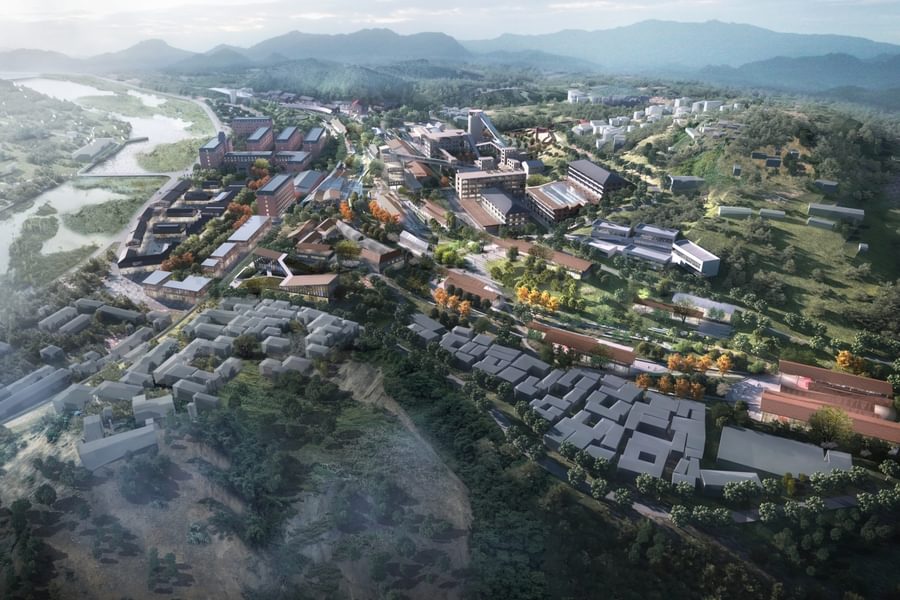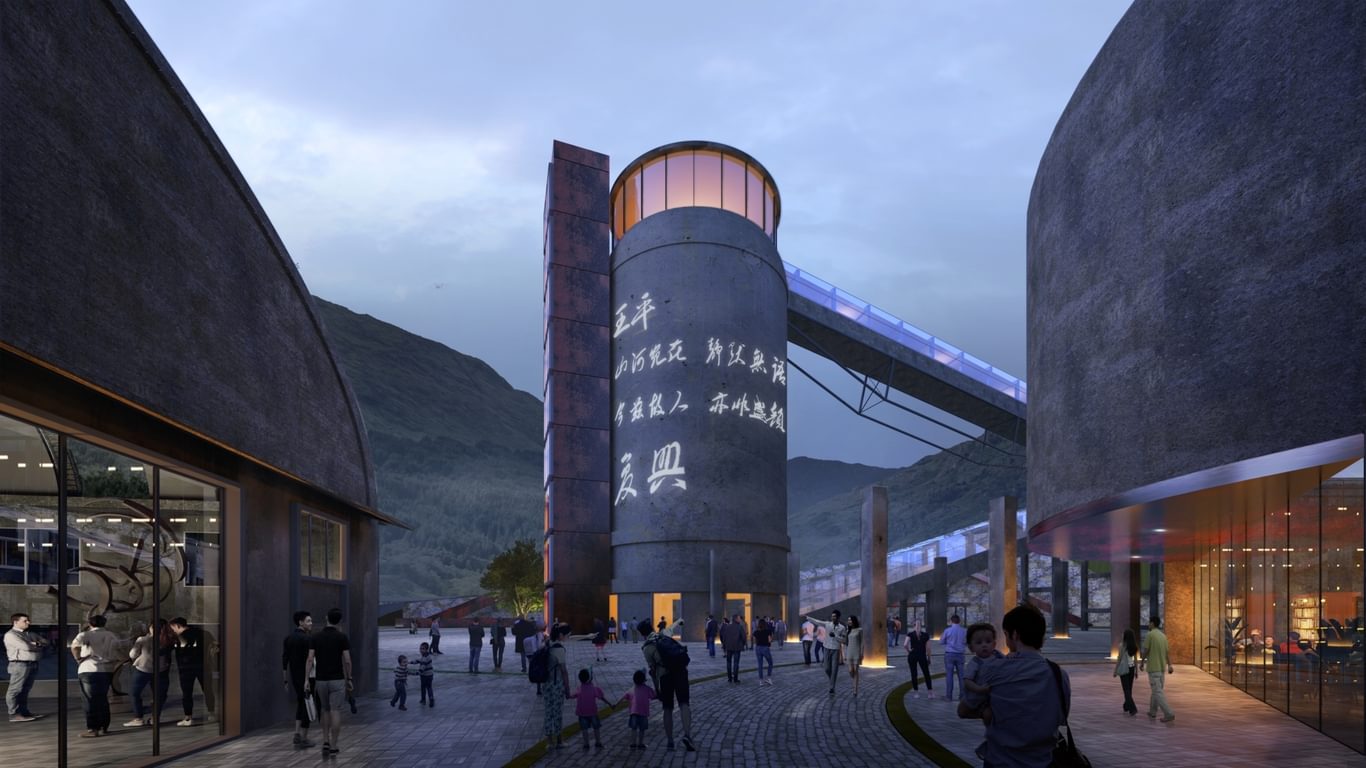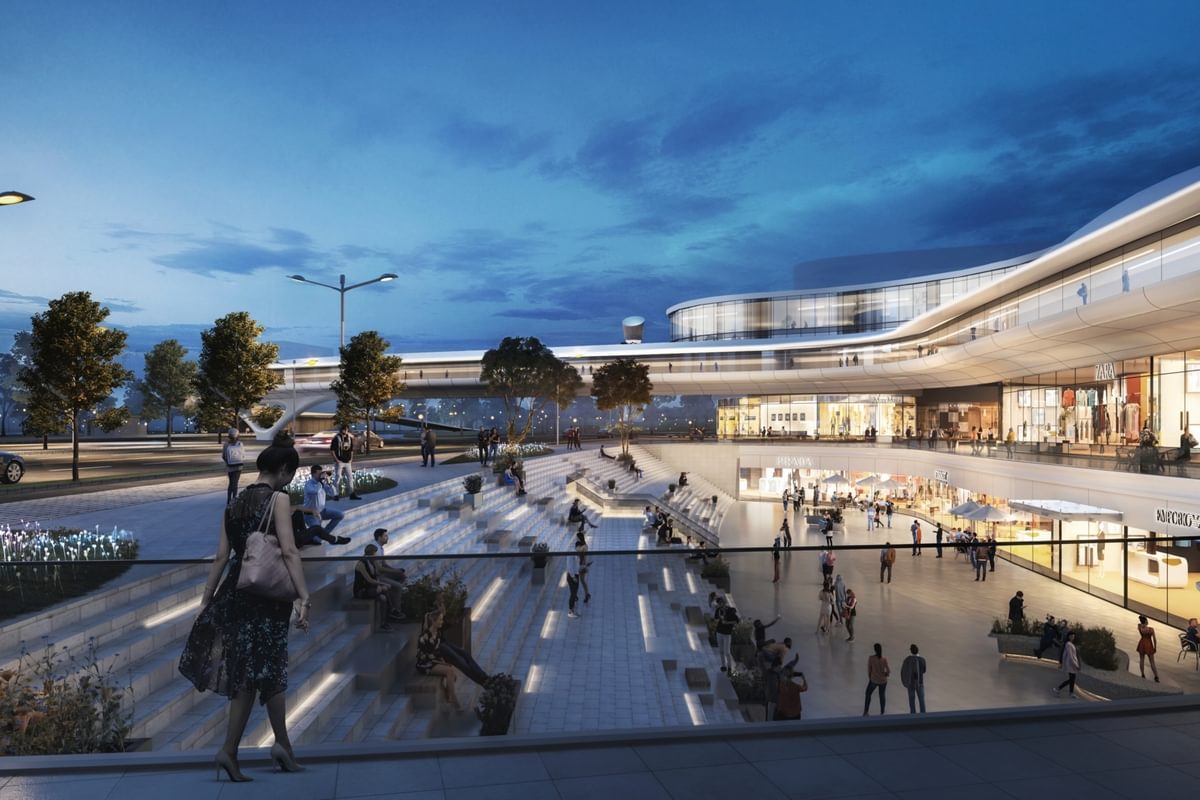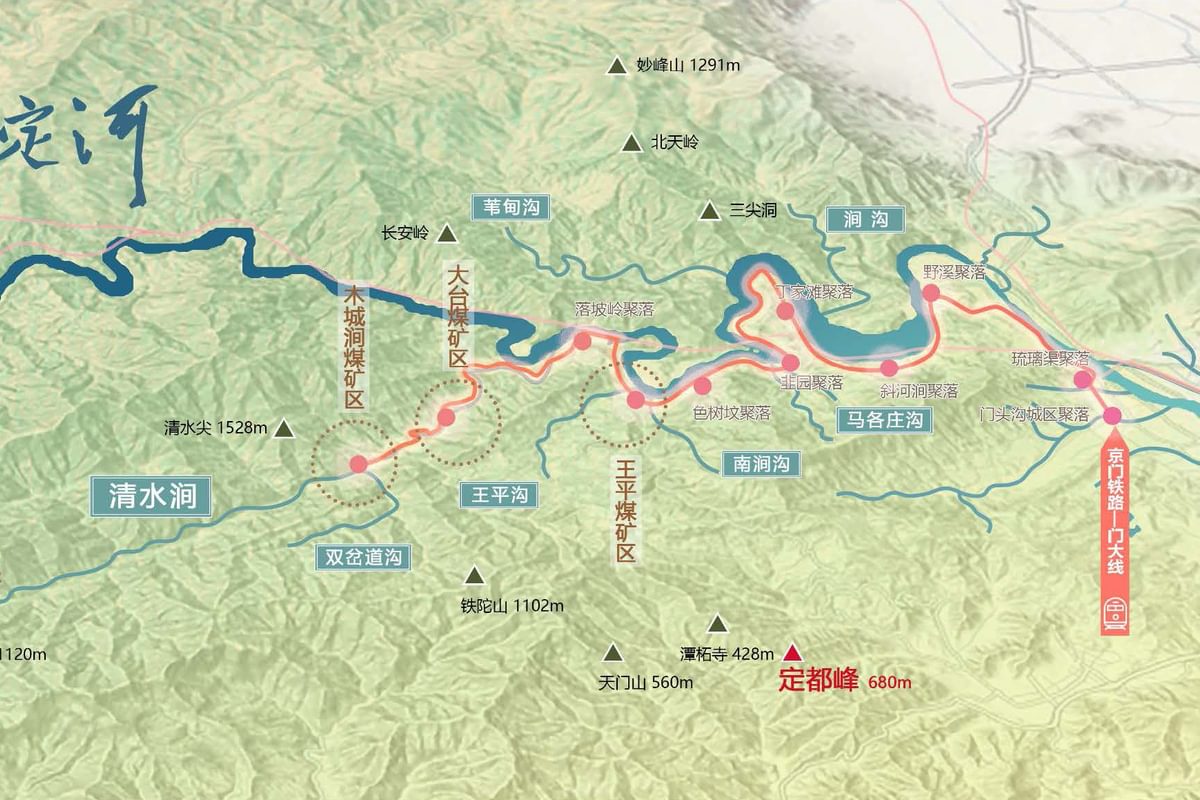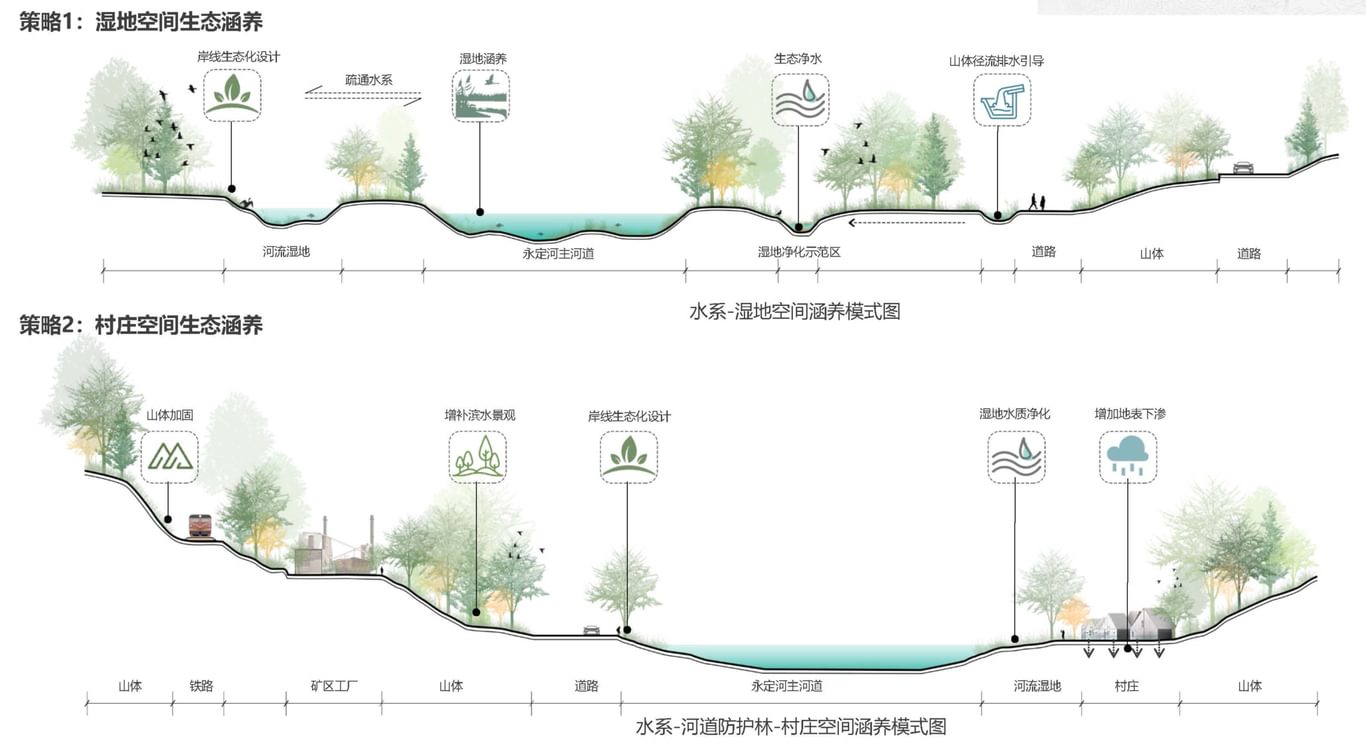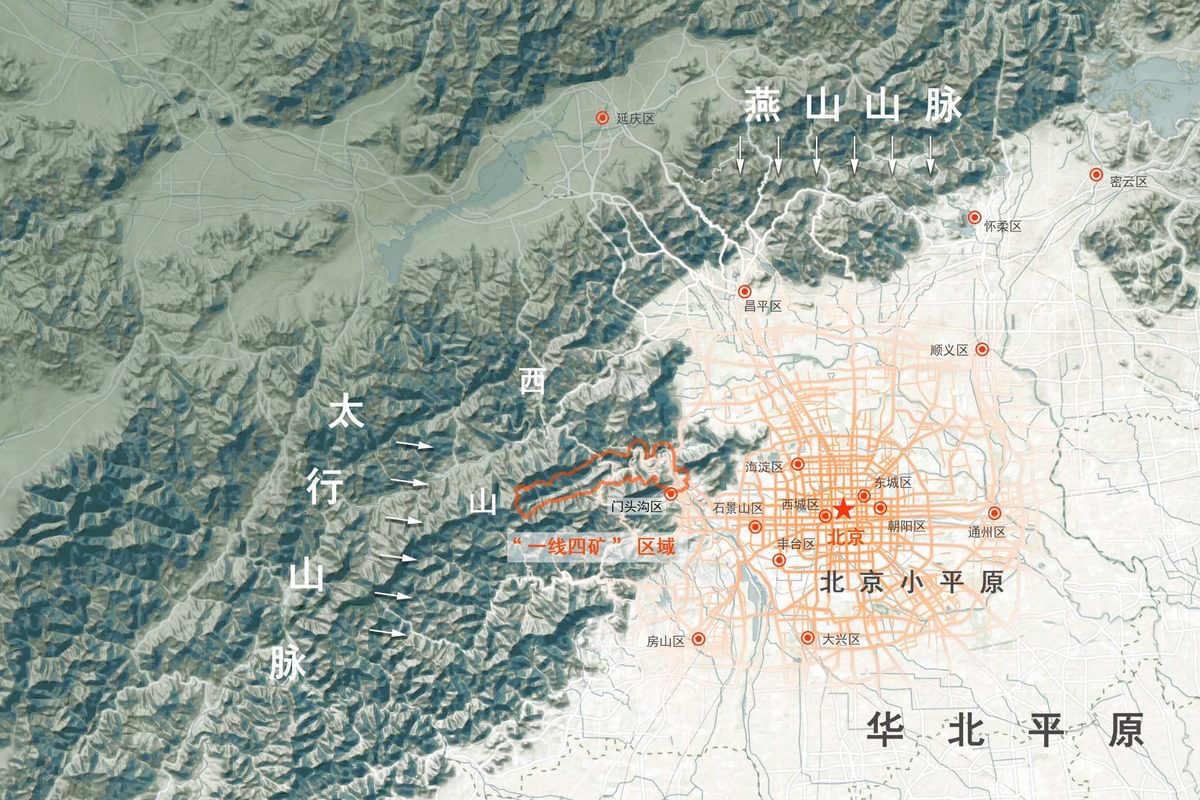
The competition winning masterplan for our 99km2 One Line and Four Mines project in the mountains west of Beijing
The Chapman Taylor Shanghai studio is delighted to announce another winning design for a major masterplan. The Beijing Municipal Commission of Planning and Natural Resources and the Beijing Mentougou Government held a competition for this important 99km2 regeneration project across a historic 185km long coal mining route, including 12 linked towns and villages.
The "One Line and Four Mines" site is located on the eastern side of Mentougou District. It is the nearest ecological conservation zone to the city centre of Beijing, just 30km away. As the border between the city and nature, it combines a bustling ambience and great natural beauty.
Mentougou district which is approximately 30km to the west of Beijing's city centre
Our project, produced in collaboration with the Beijing Institute of Architectural Design and Deloitte Consulting (Beijing), was selected as the competition winner, following an evaluation by a panel of experts and a public vote.
For over one thousand years, since the Liao and Jin dynasties, the Western Hills mountain range has nurtured a unique culture with rich underground coal resources. 1923 saw the official construction of the Mentougou-Datai section of the Beijing-Mentougou Railway, which brought a steady supply flow of coal to the city and resulted in a century of prosperous history. September 2020 saw the closure of the last mine, leaving damaged habitats and disintegrated community relations.
The regeneration and transformation of mining areas and railways is a key part of this project, alongside an emphasis on ecological civilisation and green development.
Four key issues were identified by our team that needed to be addressed:
Damaged habitat: accelerated by perennial mining and the recent industrial mechanisation process, this area needs a systematic ecological restoration.
Loss of historical vitality: With the closure of the mines, the commercial and social vitality of the area is fading in tandem with the thousand-year history of coal mining in Beijing. To counteract this some of the towns have been developing their forestry and fruit industries, as well as leisure and residential accommodation, but much more work needs to be done.
The disintegration of the traditional communities: With the closure of the mines the symbiotic relationship between the mines and the villages gradually disintegrated with a massive loss of population.
Model innovation: In the face of complex problems involving ecology, industry and social structures, new models must be explored, not just standard methods of development.
Our masterplan promotes beautiful, regenerated ecology and evokes memories of the traditional coal mining industry. We took our inspiration from the Chinese idea of harmony between man and nature and the benefits this brings to life.
The masterplan is characterised by the varied nature of the mountain and river landscape and the twelve towns and villages connected by a long winding route along the valley. We have laid out cycling and walking routes as well as organising multiple types of cultural tourism trails to create exploratory experiences. The mines will be regenerated and will become part of a breathtaking landscape; a picturesque place for people living and working, to help them discover their own spiritual path.
The first stage is for the landscape to be repaired and regenerated to provide a beautiful ecological environment. For disaster-prone areas, restoration is carried out by constructing ecological berms and irrigation and grass communities. Horizontal ditches are used to intercept water and improve plant communities to reduce soil erosion. The design proposes strategies such as sewage interception at the foot of the mountain, pond purification, follow-up greening with pioneering plants and preservation of natural succession. The current flat fields and terraces are upgraded by returning farmland to forest, improving quality and reducing carbon. With a combination of strategies, the mines will be rejuvenated and returned back to nature.
The essence of each of the twelve settlements is identified and celebrated, resulting in an extraordinary variety of experiences. The unique characteristics of each of these twelve places are also linked to provide social, economic and visual benefits for residents and visitors. Therefore, the mines are regenerated, the ecology is reborn and the towns are reinvigorated.
As the first tourism station on the mine line, Mentougou Station will have a unique 'green first' concept. As a gathering place for Mentougou cuisine, the Jiuyuan Village Station is in an ecological reserve. Wangping Station is in the mining area with the best-preserved industrial heritage and the entrance for the first of the four mines. Shaishufen Station is based on green and natural rural living; a technological agricultural utopia. The Luopoling Railway Station area is incredibly scenic, creating a retreat for urban dwellers from the hustle and bustle of the city. The Data Mine zone will become a dynamic extreme sports town. Relying on natural resources, a tranquil ecological environment for wellness could be created in the Muchengjian community.
We hope that this place can become a realm of mountains and rivers, a place of poetic habitation, a source of spiritual exploration and a valley of low-carbon wisdom. The ultimate goal is to create a resilient masterplanning and development strategy which will create vibrant new communities in the mountain landscape.
